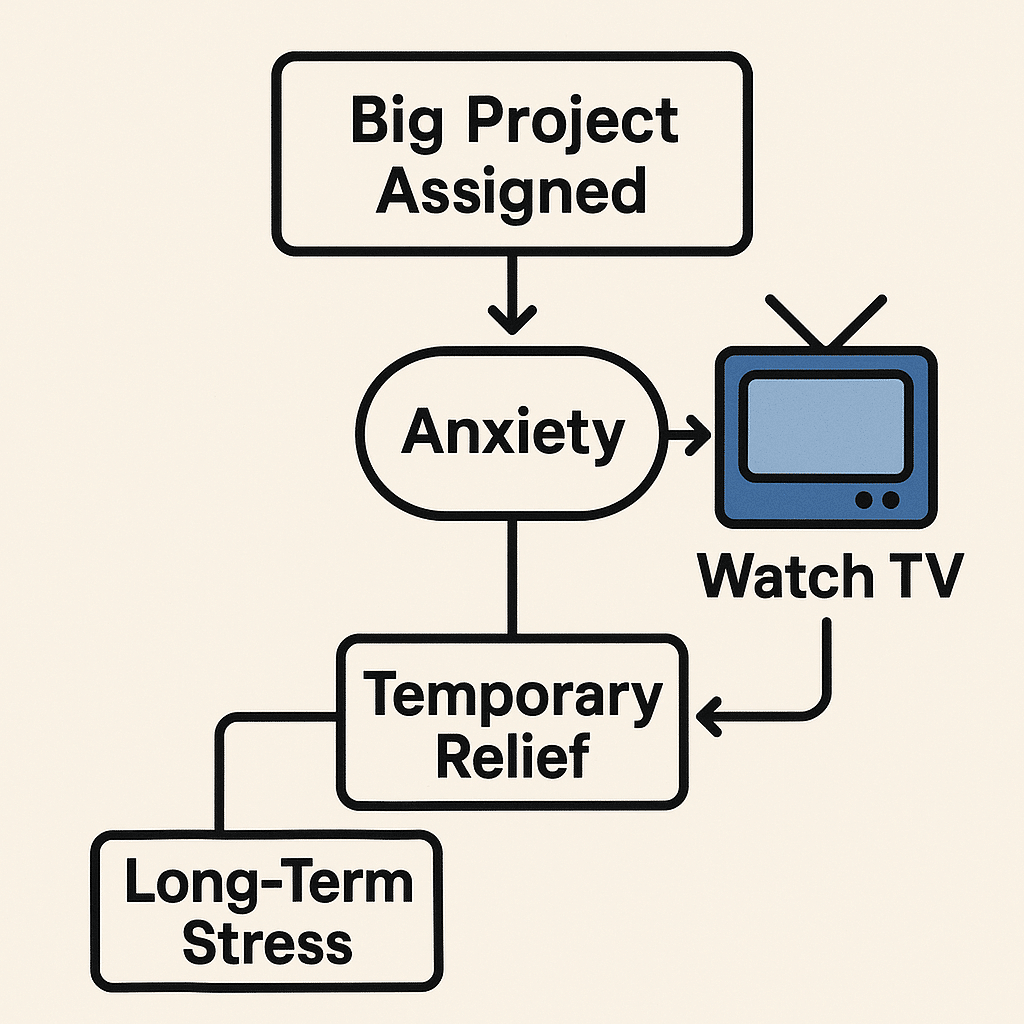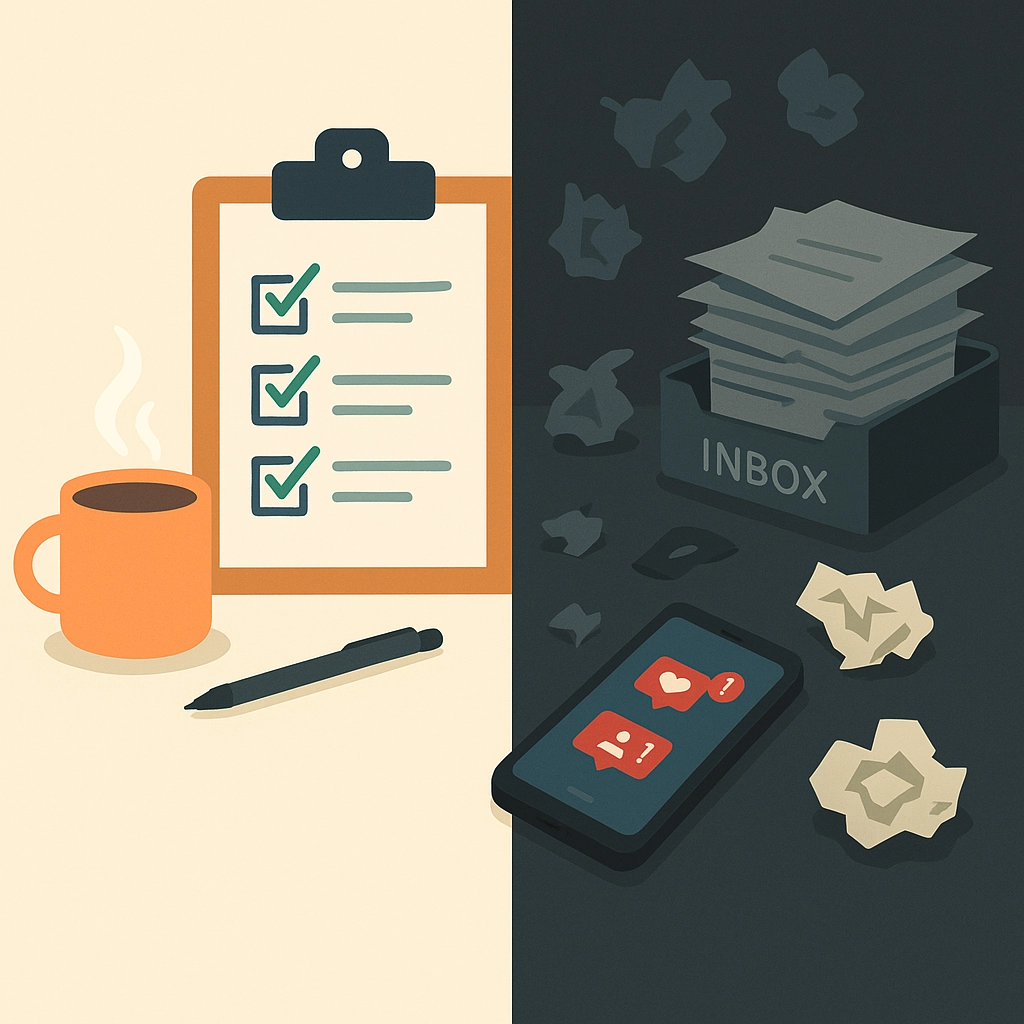You have an important task to do. It’s looming over you, and you know you should start. But suddenly, your phone screen becomes the most fascinating thing in the world. You decide to organize your spice rack alphabetically. You fall into a two-hour YouTube rabbit hole about the history of cheese.
Anything but the thing.
This is procrastination. It’s that gap between intention and action, a gap filled with anxiety, guilt, and a frantic burst of last-minute work. We often label it as “laziness,” but the truth is far more complex. Procrastination isn’t a character flaw; it’s a self-preservation mechanism.
Understanding why you procrastinate is the first step to beating it. This guide will walk you through the science of why you put things off and give you actionable strategies that actually work.
Part 1: The Real Reason You Procrastinate (It’s Not Laziness)
At its core, procrastination is an emotional regulation problem, not a time management one. When faced with a task that makes us feel bad—whether it’s boring, difficult, or tied to our self-worth—our brain seeks a temporary mood boost by doing something more pleasant.
Here are the most common emotional triggers behind procrastination:
- Fear of Failure (or Success): If you tie your self-worth to the outcome, starting becomes terrifying. “If I don’t try, I can’t fail.” Perfectionism is a major driver here.
- Anxiety and Overwhelm: The task seems so big and monumental that you don’t even know where to begin. Your brain shuts down to avoid the stress (this is called “amygdala hijack”).
- Decision Paralysis: The task involves too many choices, and the fear of making the “wrong” one keeps you stuck.
- Lack of Motivation or Connection: The task feels pointless, unrewarding, or disconnected from your personal goals, so there’s no internal drive to complete it.
Recognizing which of these is your trigger is your first superpower in this fight.

Part 2: How to Stop Procrastinating: 5 Actionable Strategies
Now that we know the “why,” let’s focus on the “how.” These aren’t just platitudes; they are science-backed methods designed to trick your brain into getting started.
1. The 2-Minute Rule
Coined by productivity expert James Clear, this rule is brilliantly simple: If a task takes less than two minutes, do it now.
But its real power lies in its application to bigger tasks: Start any habit or task by doing it for just two minutes.
- “Read a book” becomes “Read one page.”
- “Write a 10-page report” becomes “Open the document and write one sentence.”
- “Go for a run” becomes “Put on my running shoes.”
Why it works: It bypasses the “overwhelm” trigger. Anyone can do something for two minutes. More often than not, once you start, inertia takes over, and you’ll find yourself continuing for much longer.
2. Break It Down (The Salami Slicer Method)
A huge, daunting task like “Plan the company retreat” is a recipe for procrastination. You need to slice it into bite-sized, concrete actions.
- Vague Task: Plan the company retreat.
- Sliced Tasks:
- Brainstorm 3 potential locations.
- Email 5 hotels for quotes.
- Create a draft budget in Excel.
- Poll the team for date availability.
Why it works: It turns an abstract, overwhelming cloud of a project into a clear, actionable checklist. Each small task provides a small dopamine hit upon completion, building momentum.
3. “Eat the Frog”
This concept comes from Mark Twain, who famously said that if the first thing you do each morning is to eat a live frog, you can go through the day with the satisfaction of knowing that that is probably the worst thing that is going to happen to you all day long.
Your “frog” is your most important, most dreaded task. Do it first thing in the morning before you have time to overthink it.
Why it works: You use your peak willpower and mental energy on the task that needs it most, creating a massive sense of accomplishment that fuels the rest of your day.
4. Time Blocking & The Pomodoro Technique
Instead of a vague to-do list, give every task a specific home on your calendar (Time Blocking). For the task itself, use the Pomodoro Technique:
- Choose one task to work on.
- Set a timer for 25 minutes.
- Work only on that task, without distractions.
- When the timer rings, take a 5-minute break.
- After four “Pomodoros,” take a longer 15-30 minute break.
Why it works: It creates a sense of urgency and makes work feel less endless. The forced breaks prevent burnout and help you stay focused during the work intervals.
5. Practice Self-Compassion
This might sound counterintuitive, but beating yourself up for procrastinating is the worst thing you can do. The guilt and shame become negative emotions associated with the task, making you more likely to avoid it in the future.
Instead, acknowledge the feeling without judgment: “Okay, I procrastinated. It happens. I’m going to try again now.” Research shows that students who forgave themselves for procrastinating on a first exam were less likely to procrastinate on the next one.
Frequently Asked Questions (FAQ)
Q: Is procrastination a sign of laziness or poor time management?
A: Rarely. As we’ve covered, it’s most often an emotional response to a task. While time management techniques can help, addressing the underlying feeling (like fear or anxiety) is the key to long-term change.
Q: What if my procrastination is really severe?
A: If procrastination is causing significant distress in your life, work, or relationships and feels impossible to manage, it can be linked to conditions like ADHD, anxiety, or depression. Seeking guidance from a therapist or mental health professional is a sign of strength and can provide targeted support.
Q: Can procrastination be a good thing?
A: Sometimes! It’s called “active procrastination.” This is when you consciously delay a task to allow your mind to incubate ideas, leading to more creative solutions. The difference is intention—it’s a deliberate choice, not an anxiety-driven avoidance.
Your First Step Starts Now
The journey away from procrastination isn’t about becoming a perfect, hyper-productive robot. It’s about building a better relationship with your work and yourself. It’s about progress, not perfection.
Don’t try to implement all these strategies at once. Pick just one.

